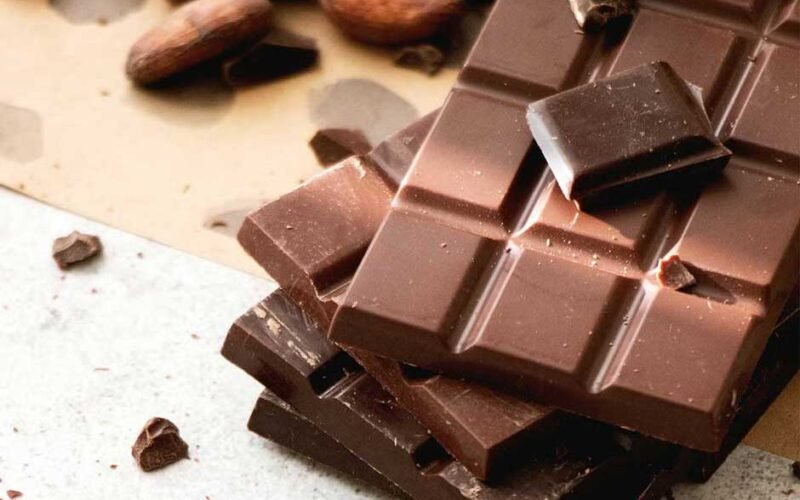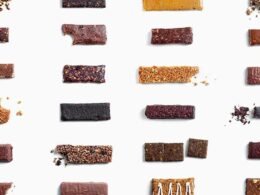Few things in life deliver joy as universally as a milk chocolate bar. Found in lunchboxes, gift baskets, and store shelves across the globe, this creamy, sweet treat has earned a permanent place in our hearts—and in our diets. But what exactly is a milk chocolate bar, and why has it captivated so many for over a century?
In this blog, we’ll unwrap the history, ingredients, cultural impact, and science behind the milk chocolate bar’s irresistible popularity.
The Origins of the Milk Chocolate Bar
The story of the milk chocolate bar begins in the 19th century, though chocolate itself dates back thousands of years. The ancient Maya and Aztec civilizations consumed chocolate as a bitter beverage made from roasted cacao beans. It wasn’t until European colonization that sugar was added, transforming cacao into the sweet chocolate we know today.
But adding milk to chocolate? That innovation is largely credited to Daniel Peter, a Swiss chocolatier. In 1875, Peter developed the first solid milk chocolate bar by combining powdered milk (developed by his neighbor, Henri Nestlé) with chocolate liquor and sugar. This creamy concoction marked a turning point in chocolate history.
What followed was a global boom. As techniques improved and companies like Nestlé, Cadbury, and Hershey refined recipes and mass production methods, the milk chocolate bar became a worldwide sensation.
What Makes a Milk Chocolate Bar “Milk” Chocolate?
To qualify as a milk chocolate bar, the product must contain a specific blend of ingredients: cocoa solids, cocoa butter, milk solids, and sugar. The addition of milk—either in powdered, liquid, or condensed form—gives the chocolate a smoother, creamier texture and a lighter color than its dark chocolate counterpart.
Here’s a typical ingredient breakdown for a standard milk chocolate bar:
- Cocoa solids(10–25%): Provide the chocolate flavor
- Cocoa butter: Adds richness and melt-in-your-mouth texture
- Milk solids(12–20%): Add creaminess and soften bitterness
- Sugar: Sweetens and balances cocoa’s natural intensity
- Emulsifiers: Such as soy lecithin, for improved texture
The percentages may vary slightly depending on regional regulations (especially in the EU and U.S.), but milk is the defining factor.
Taste Profile: Why It’s So Appealing
The popularity of the milk chocolate bar can be largely attributed to its universally appealing flavor profile:
- Sweetness: Sugar reduces the bitterness of cocoa, making it palatable for children and adults alike.
- Creaminess: Milk adds a smooth, mellow texture that melts gently on the tongue.
- Complexity: The caramel and vanilla notes often found in milk chocolate provide layers of flavor that make it comforting and addictive.
Compared to dark chocolate, which has a bolder and sometimes bitter taste, milk chocolate bars offer a gentler and more accessible introduction to the world of chocolate.
Psychological and Cultural Appeal
Comfort Food Status
Milk chocolate bars aren’t just snacks—they’re emotional crutches, nostalgic indulgences, and cultural icons. The simple act of unwrapping a milk chocolate bar can evoke childhood memories, romantic moments, or festive celebrations. It’s comfort food in the truest sense.
Global Celebrations
From Valentine’s Day to Halloween, milk chocolate bars are often at the heart of celebratory traditions. They’re molded into Easter bunnies, slipped into Christmas stockings, and used in countless dessert recipes. These associations reinforce positive emotions around the product.
A Marketing Masterpiece
The success of the milk chocolate bar isn’t only about taste—it’s also about branding. Companies like Hershey’s, Cadbury, and Nestlé built their empires on the back of clever marketing.
- Hershey’s Milk Chocolate Barbecame a staple in American culture during World War I, when the U.S. military distributed it to soldiers.
- Cadbury Dairy Milkcapitalized on luxury and heritage in the UK market, emphasizing its high milk content and smooth texture.
- Nestlé’s Milk Chocolateproducts found global markets thanks to a reputation for Swiss quality.
These companies didn’t just sell chocolate—they sold emotion, comfort, and trust. And they continue to evolve, introducing limited editions and themed packaging to maintain interest.
Nutritional Considerations
While a milk chocolate bar is undeniably delicious, it’s also worth acknowledging its nutritional profile:
- Calories: Typically 150–250 per serving
- Sugar: Can range from 15–30g per bar
- Fat: Includes both saturated and unsaturated fats
- Protein: A small amount from milk solids
Though high in calories and sugar, milk chocolate bars are fine in moderation. Some versions are even fortified with vitamins or designed to be lower in sugar, catering to health-conscious consumers.
From a dental health perspective, it’s important to be mindful of the sugar content in milk chocolate bars. Frequent consumption of sugary snacks can contribute to tooth decay, as sugar feeds the bacteria in your mouth that produce acid and erode enamel. According to this dentist who does quality dental crowns in Tallahassee FL, to protect your teeth, enjoy chocolate as an occasional treat and rinse your mouth with water or brush your teeth afterwards. Choosing options with lower sugar content or eating chocolate during meals—when saliva production is higher—can also help reduce the risk of cavities.
The Science of Craving Milk Chocolate
The pleasure of eating a milk chocolate bar isn’t purely emotional—it’s also biochemical. Eating chocolate triggers the release of neurotransmitters like:
- Dopamine: Associated with reward and pleasure
- Serotonin: Contributes to mood regulation
- Endorphins: Natural pain relievers and mood boosters
In short, milk chocolate stimulates the brain’s reward center, creating a sense of happiness and satisfaction. Combined with its smooth texture and sweet flavor, it’s no wonder that so many people find milk chocolate bars irresistible.
Milk Chocolate Bar Variations Around the World
Different cultures have developed their own unique takes on the milk chocolate bar:
- United States: Brands like Hershey’s emphasize a tangy flavor, due to the use of sour milk in production.
- Switzerland: Swiss milk chocolate bars tend to be smoother and creamier, often using Alpine milk.
- UK and Ireland: British milk chocolate bars like Cadbury Dairy Milk are typically higher in milk solids.
- Japan: Offers innovative milk chocolate bar flavors, including green tea and sake.
- Germany and Austria: Brands like Milka blend high milk content with flavors like hazelnut or biscuit.
This global diversity speaks to the milk chocolate bar’s adaptability and universal appeal.
Innovations and Trends in Milk Chocolate Bars
The milk chocolate bar industry continues to innovate in response to consumer trends:
Ethical Sourcing
With increasing awareness about environmental and social impacts, many manufacturers now produce fair-trade and Rainforest Alliance Certified milk chocolate bars. These ensure that cacao farmers are paid fairly and that sustainable practices are used.
Artisanal and Gourmet Options
Craft chocolatiers are elevating the milk chocolate bar to new levels with:
- Single-origin cacao
- Organic ingredients
- Unique inclusions (like Himalayan salt, lavender, or chili)
Functional Chocolate
A new trend includes functional milk chocolate bars infused with vitamins, probiotics, CBD, or adaptogens, catering to consumers seeking indulgence with benefits.
A Sweet Staple for Generations
From its humble origins in 19th-century Switzerland to its place as a global cultural phenomenon, the milk chocolate bar has proven its staying power. With a winning combination of sweetness, creaminess, and emotional resonance, it appeals to virtually all age groups and palates.
Whether enjoyed as a nostalgic treat, a gourmet indulgence, or a mood booster after a long day, the milk chocolate bar continues to reign as one of the most beloved confections in the world.










